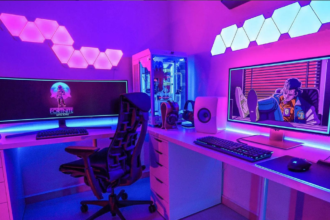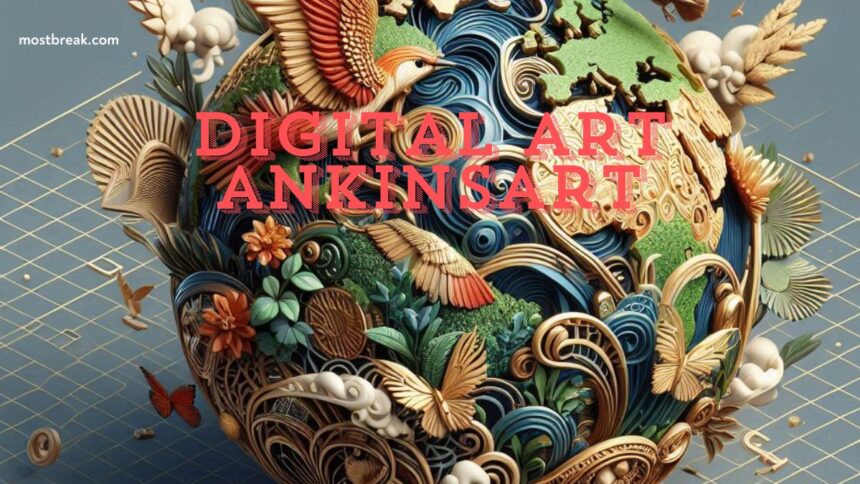Introduction to Digital Art
Digital art ankinsart is a form of artistic expression that utilizes digital technology as an essential part of the creative or presentation process. Unlike traditional art forms that rely on physical mediums such as canvas and paint, digital art leverages computer software, graphics tablets, and other digital tools to produce artwork. Over the years, digital art has evolved from simple pixelated images to highly sophisticated and detailed creations, reflecting the rapid advancements in technology.
The Rise of Digital art ankinsart
The history of Digital art ankinsart dates back to the 1950s when early computer graphics were used in scientific and engineering fields. However, it wasn’t until the 1980s and 1990s, with the advent of personal computers and software like Adobe Photoshop, that digital art began to gain mainstream recognition. These technological advancements democratized art creation, allowing more people to experiment and create with digital tools.
Benefits of Digital Art
One of the most significant benefits of digital art is its accessibility. Artists no longer need expensive supplies or studio space to create their work; a computer and software can suffice. Additionally, digital art is incredibly versatile, enabling artists to explore various styles and techniques with ease. It is also cost-effective in the long run, as digital tools often require a one-time purchase compared to the recurring costs of traditional materials.
Tools and Software for Digital Art
To create digital art, artists need specific tools and software. Popular digital art software includes Adobe Photoshop, Corel Painter, and Procreate. These programs offer a wide range of features and brushes that mimic traditional painting techniques. Hardware essentials include a reliable computer, a high-resolution monitor, and a graphics tablet like a Wacom or an iPad with an Apple Pencil, which provides precision and a natural drawing experience.
Understanding Ankinsart
Ankinsart is a distinctive approach within the Digital art ankinsart realm, known for its unique blend of creativity and technical prowess. Founded by an innovative artist, Ankinsart aims to push the boundaries of digital art, exploring new techniques and expressions. The vision behind Ankinsart is to create art that not only captivates the viewer but also tells a compelling story, combining traditional art influences with modern digital tools.
Techniques in Ankinsart
Ankinsart is characterized by its unique styles and methods. The artist behind Ankinsart draws inspiration from various sources, including nature, abstract concepts, and everyday life. Techniques such as layering, digital painting, and photo manipulation are commonly used to create visually striking pieces. The influence of traditional art forms is evident, with digital brushstrokes and textures mimicking those of real-world media.
Creating Digital Art with Ankinsart
Creating digital art in the style of Ankinsart involves a step-by-step process that begins with conceptualization. The artist starts with a rough sketch, refining it digitally with layers and details. Tips for beginners include practicing regularly, experimenting with different tools, and studying the works of other digital artists to gain inspiration. Ankinsart emphasizes the importance of creativity and personal expression in the digital art-making process.
Ankinsart and the Digital art ankinsart Community
Online platforms and social media are crucial for this interaction, allowing artists to share their work, receive feedback, and engage with a broader audience. Communities on platforms like DeviantArt, ArtStation, and Instagram are particularly active, providing a supportive environment for artists at all levels.
Exhibiting Digital Art
Exhibiting digital art can be done through online galleries and physical exhibitions. Online galleries such as Behance and Dribbble allow artists to showcase their portfolios to a global audience. Physical exhibitions, although less common for digital art, are becoming more popular as galleries and museums recognize the value and impact of digital creations. These exhibitions provide an opportunity for artists to display their work in a tangible format, often using digital screens or projections.
The Impact of Digital Art on Traditional Art Forms
Digital art has significantly impacted traditional art forms, leading to a blend of techniques and practices. Many artists now incorporate digital tools into their traditional workflows, enhancing their creativity and expanding their possibilities. This evolution has led to the emergence of new art forms that combine elements of both traditional and digital art, reflecting the dynamic nature of the art world.
Monetizing Digital Art
Monetizing digital art has become increasingly viable with the rise of online platforms. Artists can sell their digital artworks on websites like Etsy, Gumroad, and Redbubble. Additionally, non-fungible tokens (NFTs) have revolutionized the art market, allowing artists to sell digital art as unique, collectible items on blockchain platforms like OpenSea and Rarible. These platforms provide artists with new revenue streams and the opportunity to reach a global market.
Challenges in Digital Art
Despite its many advantages, digital art comes with its own set of challenges. Common obstacles include technical issues, such as software glitches and hardware limitations, as well as the difficulty of standing out in a crowded digital space. Overcoming these challenges requires persistence, continuous learning, and adaptation. Artists must stay updated with the latest technological developments and trends to maintain their competitive edge.
Future of Digital Art
The future of digital art is bright, with many exciting trends and emerging technologies on the horizon. AI-powered tools and generative art are also gaining traction, allowing artists to explore new creative possibilities. As technology continues to advance, digital art will undoubtedly evolve, leading to new forms of expression and innovation.
Ankinsart’s Contribution to Digital Art
Ankinsart has made notable contributions to the digital art scene, with its innovative approach and unique style. Ankinsart’s influence extends beyond individual artworks, inspiring other digital artists to experiment and push the boundaries of their craft.
Conclusion
In conclusion, Digital art ankinsart is a dynamic and ever-changing field that provides countless creative and expressive opportunities. Ankinsart epitomizes the capability of computerized workmanship, mixing conventional impacts with current strategies to make spellbinding and exceptional pieces. The future of digital art looks promising as technology continues to advance, with new platforms and tools providing artists with ever-expanding opportunities. Whether you are a carefully prepared craftsman or a fledgling, the universe of computerized workmanship offers something for everybody, welcoming you to investigate, make, and motivate.



